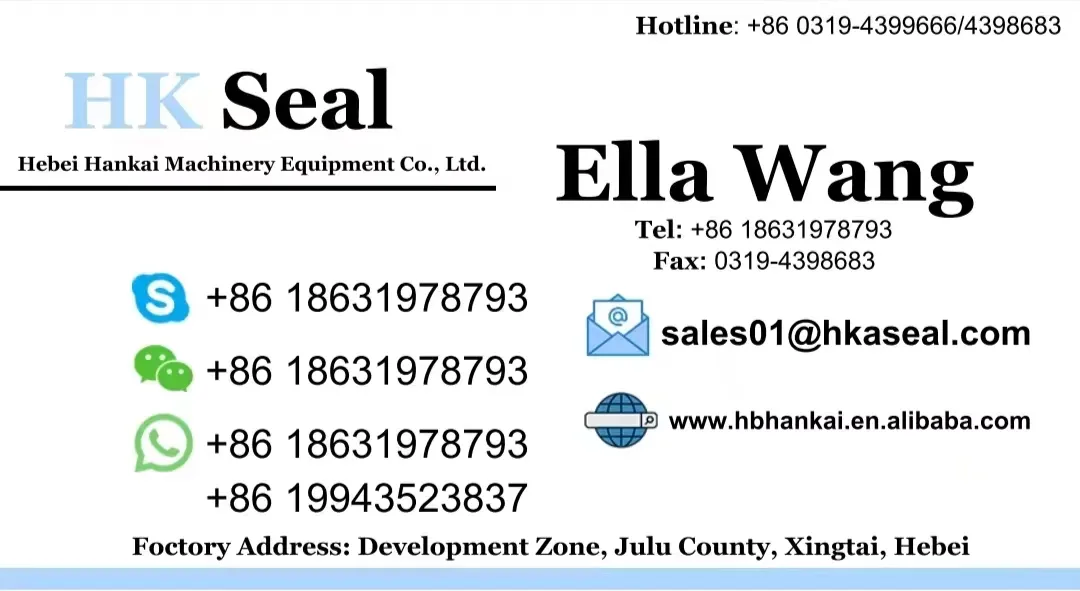10 月 . 10, 2024 22:39 Back to list
Shaft Dust Seal Solutions for Enhanced Equipment Protection and Performance Maintenance
Understanding Shaft Dust Seals Importance, Types, and Applications
Shaft dust seals play a critical role in various mechanical systems, particularly in machinery where rotating components are exposed to harsh environmental conditions. These seals help to keep contaminants such as dust, dirt, and other particulate matter from infiltrating the system, thereby ensuring smooth operation and extending the lifespan of the equipment. This article delves into the importance, types, and applications of shaft dust seals, showcasing their relevance in modern engineering.
The Importance of Shaft Dust Seals
Shaft dust seals are integral to maintaining the integrity of mechanical assemblies. When exposed to contaminants, mechanical components can suffer from accelerated wear and tear, leading to increased maintenance costs and potential system failures. Dust and debris can compromise lubricant effectiveness, causing parts to overheat and eventually leading to catastrophic failure. By preventing contaminants from entering critical areas, dust seals enhance the reliability and operational efficiency of machinery.
Moreover, protecting sensitive components ensures consistent performance. In settings where precision is vital, such as manufacturing, aerospace, or automotive industries, the presence of dust and other particulates can significantly affect overall quality. Implementing effective dust seals can help organizations maintain high standards of performance, uphold safety regulations, and reduce downtime.
Types of Shaft Dust Seals
There are several types of shaft dust seals available in the market today, each designed for specific applications and environments
1. Lip Seals These are the most common type of dust seal. They feature a flexible lip that forms a tight seal against the rotating shaft. Lip seals are often used in automotive applications, where they keep dirt and moisture out of engine components. Their design allows them to function effectively even with slight misalignment.
2. Labyrinth Seals Labyrinth seals consist of interlocking components that create a tortuous path for contaminants. These seals do not make contact with the shaft, which minimizes friction and wear. They are ideal for applications with high-speed shafts or conditions where maintenance access is limited.
3. O-Ring Seals O-rings can be employed as dust seals, particularly in applications where space is limited. They are circular and can be fitted into grooves on the shaft and housing. O-rings are versatile and can be made from various materials, accommodating different temperatures and chemical exposures.
shaft dust seal

4. Metal Seals In environments subject to extreme conditions, metal seals may be used. These seals can withstand high temperatures and pressures, making them suitable for heavy machinery and industrial applications.
5. V-Rings These seals have a unique design that allows them to handle various shaft diameters while maintaining a tight seal. They are particularly effective at preventing the ingress of dust and other contaminants from the outside.
Applications of Shaft Dust Seals
Shaft dust seals are used in a wide range of applications across various industries
- Automotive Industry Dust seals are found in various components, including engines, wheel bearings, and transmissions. Their primary function is to prevent dirt and moisture from compromising the lubricants used in these critical systems.
- Manufacturing and Industrial Machines Equipment such as conveyors, pumps, and motors rely on effective dust seals to ensure efficient operation and reduce wear and tear caused by environmental contaminants.
- Aerospace In aircraft systems, where precision and reliability are paramount, dust seals protect vital components from contaminants that could affect performance or safety.
- Agricultural Equipment Heavy machinery used in agriculture faces extreme conditions, including exposure to soil and debris. Dust seals play a crucial role in preventing failure due to environmental factors.
Conclusion
Shaft dust seals are essential components in machinery that help safeguard critical systems against contamination. Understanding the various types of seals available and their specific applications is crucial in selecting the right solution for your needs. As industries continue to evolve and face new challenges, the role of shaft dust seals in maintaining efficiency and reliability will remain paramount. By investing in quality dust sealing solutions, organizations can enhance operational longevity, reduce maintenance costs, and ensure seamless performance even in the harshest of conditions.
-
The Power of Advanced Sealing: High-Pressure Solutions for Modern Machinery
NewsOct.29,2024
-
Optimizing Machinery with High-Performance Oil Seals
NewsOct.29,2024
-
Maximizing Machinery Efficiency with Advanced Oil Seals
NewsOct.29,2024
-
Ensuring Equipment Longevity with Quality Oil Seals
NewsOct.29,2024
-
Enhance Equipment Performance with Quality Oil Seals
NewsOct.29,2024
-
Custom Oil Seals for Specialized Machinery Needs
NewsOct.29,2024
-
The Role of Wiper Seals in Dust Sealing and Oil Protection
NewsOct.20,2024
Products categories
















